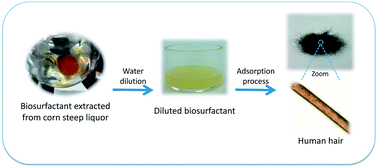Adsorption of natural surface active compounds obtained from corn on human hair
Abstract
In this work, an aqueous solution containing surface-active compounds, extracted from corn steep liquor (CSL), was added to human hair and its adsorption was studied by applying an incomplete factorial design. The independent variables established in the study were temperature (20–50 °C), pH (5–7) and treatment time (2–30 min); whereas the dependent variable studied was the adsorption capacity of hair. It was observed that the adsorption of the biosurfactant onto hair was very fast, occurring few minutes after starting the experiments. The time was, in the range studied, the least significant independent variable while temperature had an important effect on the adsorption of this biosurfactant onto hair. It was observed that the capacity of hair to adsorb the biosurfactant was improved at low temperatures. Moreover, pH had an intermediate significant effect, mainly at middle or high temperatures, meanwhile at low temperatures, the pH, in the range studied, almost did not affect the adsorption process. At the higher concentration of biosurfactant, hair was able to adsorb the biosurfactant with a maximum capacity of 3679 μg g−1.


 Please wait while we load your content...
Please wait while we load your content...